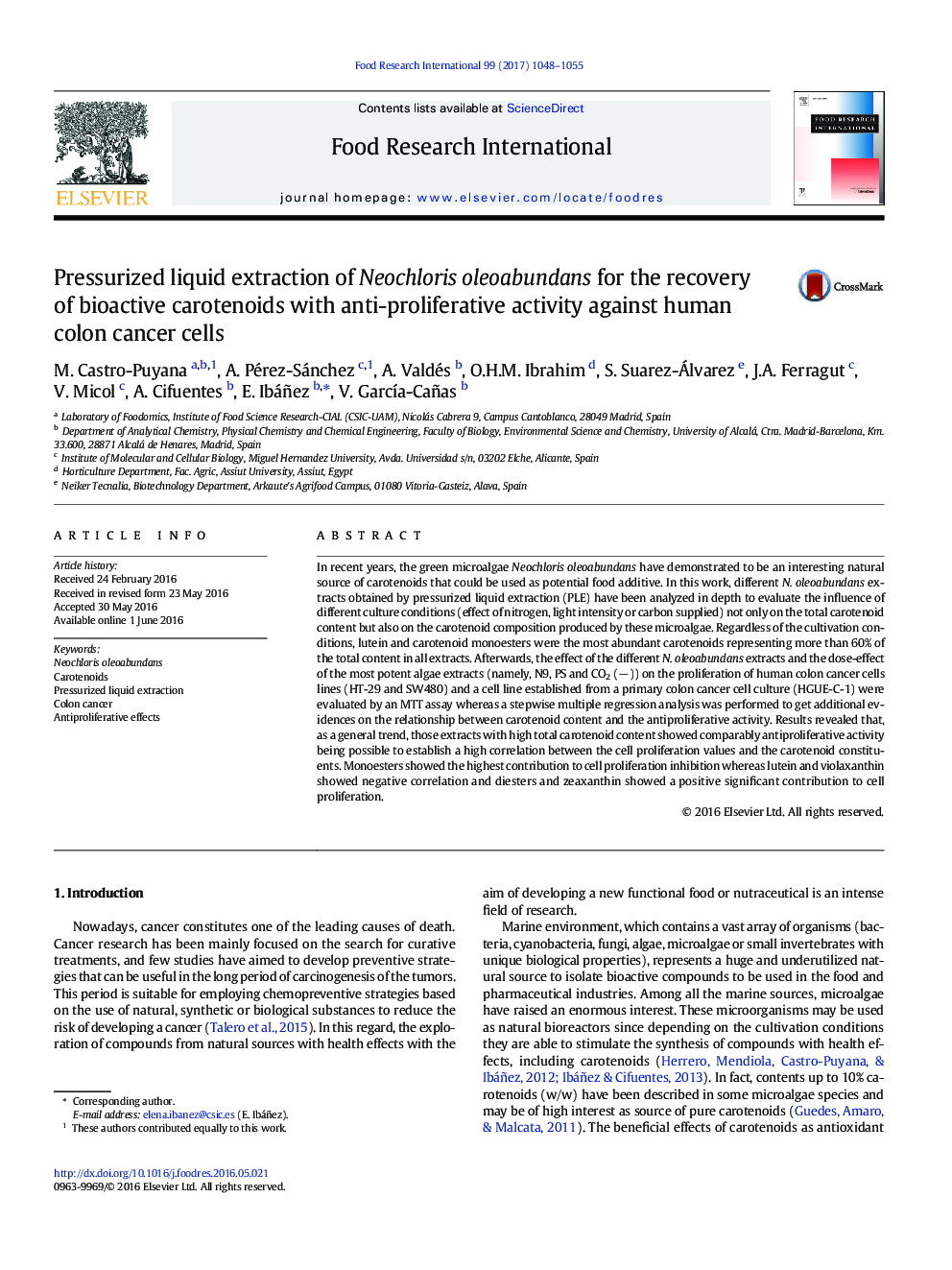| Article ID | Journal | Published Year | Pages | File Type |
|---|---|---|---|---|
| 5768062 | Food Research International | 2017 | 8 Pages |
â¢Neochloris oleoabundans accumulates relevant amounts of carotenoids depending on culture.â¢Lutein, carotenoid monoesters and violaxanthin are the main carotenoids.â¢Pressurized liquid extracts with high carotenoid content showed antiproliferative activity.â¢Carotenoids from N. oleoabundans can be used as potential food additives.
In recent years, the green microalgae Neochloris oleoabundans have demonstrated to be an interesting natural source of carotenoids that could be used as potential food additive. In this work, different N. oleoabundans extracts obtained by pressurized liquid extraction (PLE) have been analyzed in depth to evaluate the influence of different culture conditions (effect of nitrogen, light intensity or carbon supplied) not only on the total carotenoid content but also on the carotenoid composition produced by these microalgae. Regardless of the cultivation conditions, lutein and carotenoid monoesters were the most abundant carotenoids representing more than 60% of the total content in all extracts. Afterwards, the effect of the different N. oleoabundans extracts and the dose-effect of the most potent algae extracts (namely, N9, PS and CO2 (â)) on the proliferation of human colon cancer cells lines (HT-29 and SW480) and a cell line established from a primary colon cancer cell culture (HGUE-C-1) were evaluated by an MTT assay whereas a stepwise multiple regression analysis was performed to get additional evidences on the relationship between carotenoid content and the antiproliferative activity. Results revealed that, as a general trend, those extracts with high total carotenoid content showed comparably antiproliferative activity being possible to establish a high correlation between the cell proliferation values and the carotenoid constituents. Monoesters showed the highest contribution to cell proliferation inhibition whereas lutein and violaxanthin showed negative correlation and diesters and zeaxanthin showed a positive significant contribution to cell proliferation.
Graphical abstractDownload high-res image (167KB)Download full-size image
